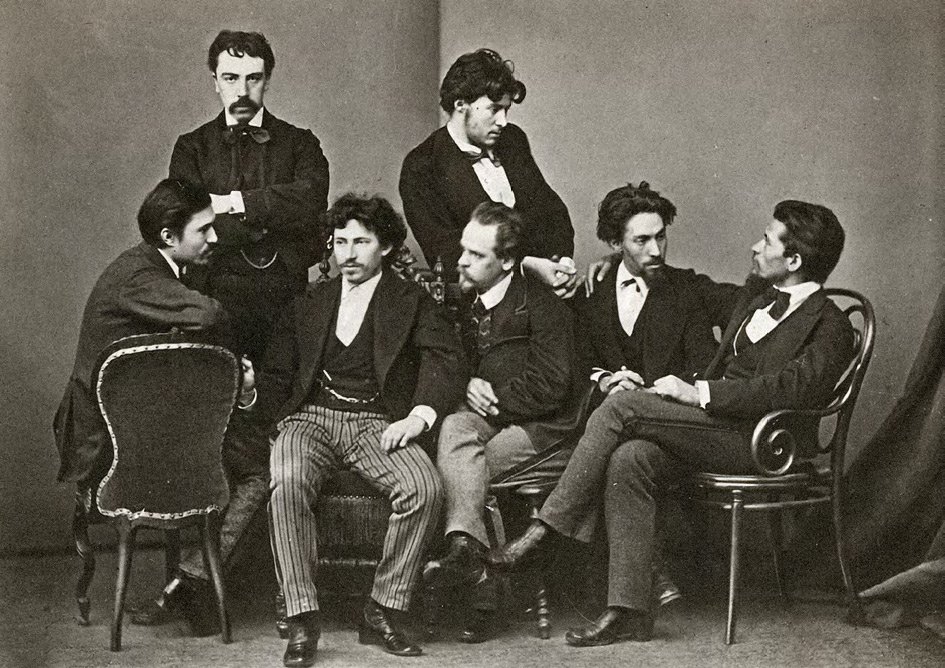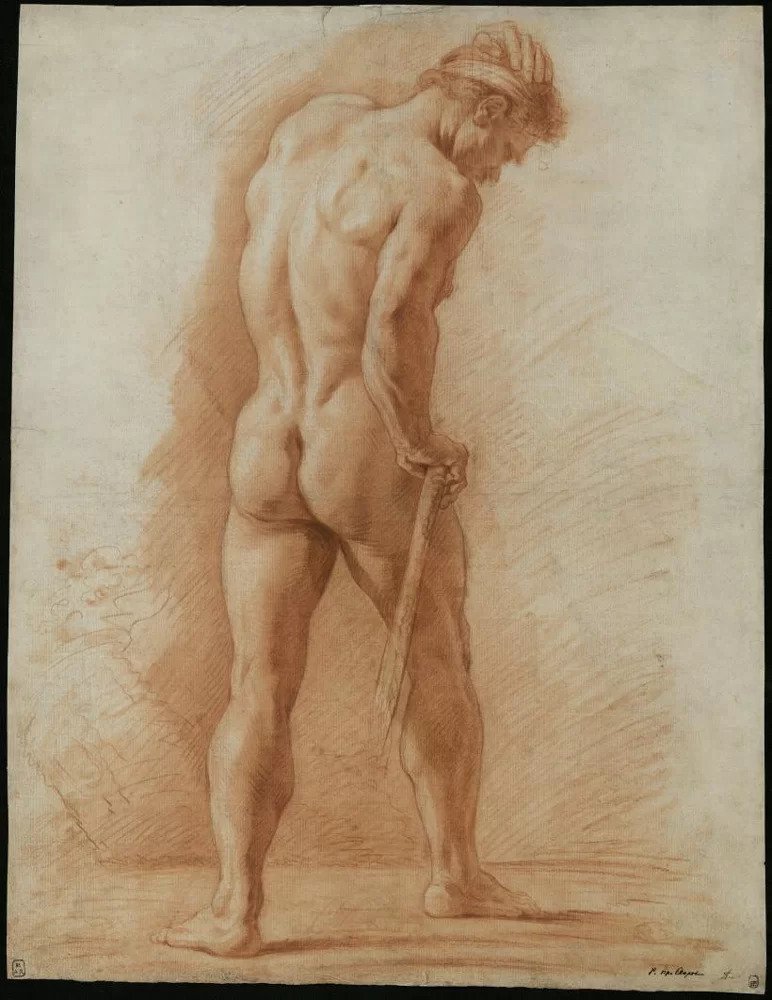
Russian School
The Russian School is centered around the Imperial Academy of Arts. Founded in the middle of the 18th Century, the Academy initially was subject to artistic influence from Western Europe through the use of drawing manuals and engravings by Johann Preissler, Jombert, Jean Cousin, J. Audran. This influence was followed by the celebrated drawings of Jean Baptiste Greuze among other 18th century French masters who’s work was acquired by Ivan Betskoi. The Russian School emerges in the 18th century under the work of such masters as Anton Losenko, Piotr Sokolov, Vasily Shebuev. The main features of the school at this time is a focus on structure, construction and idealising the model.
The 19th century brings more interest to capturing the unique character of the model and the use of higher contrast along with more naturalistic modelling. The pedagogy of Pavel Chistyakov is the biggest influence over Russian drawings of the 19th century, not only because he taught many of the century’s most important artists but also due to his extreme focus on perspective, structure and construction. The 20th century brings more naturalism to the lighting of the drawings and students begin to be interested in capturing the greater lighting effect that the model is in. This reveals influence from 19th century Paris but this style later morphs into the modern Russian style where most drawing is done on toned paper and there is great attention paid to the structure and construction with the character of the model being important but it must be said not as in previous centuries.
The tools most favoured by the Russian School is charcoal, Italian pencil (what they call black chalk pencils), stumps and Russian sauce. The last tool is the most versatile, very easily smudged but also able to be used with water to draw the model as if using watercolor. More commonly it is used to tone the paper the students draw on. The paintings of the Russian School are unique in their high color saturation versus what came out of Paris in the 19th century. There is also greater interest in composition and picture making. The outline of the figure tends to disappear in the paintings giving a flat effect to the picture compared to French painted work while still being very well modelled and volumteric.
For more information and images on the Russian School, please visit the following websites:
https://www.tretyakovgallerymagazine.com/articles/3-2019-64/pedagogical-reformers-how-vasily-polenov-applied-teaching-principles-pavel-chisty
https://www.tretyakovgallerymagazine.com/articles/3-2015-48/valentin-serov-teacher
https://www.tretyakovgallerymagazine.com/articles/3-2015-48/valentin-serov-drawings-tretyakov-gallery
https://www.tretyakovgallerymagazine.com/articles/1-2007-14/academy-arts-and-wanderers
https://collection.artsacademymuseum.org/
https://www.tretyakovgallerymagazine.com/articles/3-2019-64/vasily-polenov-impressions-paris
https://www.tretyakovgallerymagazine.com/articles/1-2013-38/first-fine-arts-museum-russia






































































































































































































